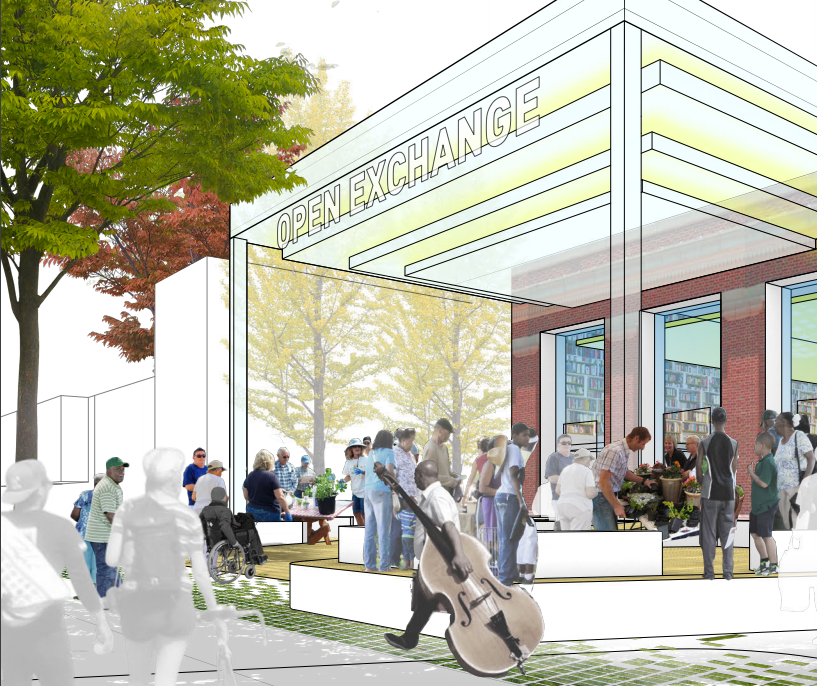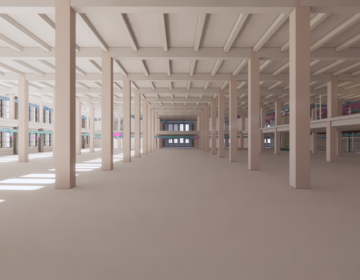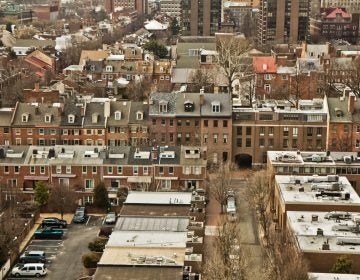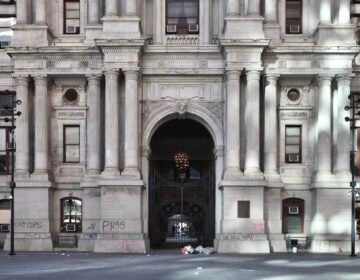Architect Jeanne Gang on using design to strengthen community

Jeanne Gang is a rare bird among architects. Her 20-year old Chicago-based firm, Studio Gang, has cut a bold path, creating a broad portfolio of work that isn’t unified by form or typology as much as by deep research that explores social and environmental aspects of design. It’s a practice that focuses on process, and brings optimistic approach to the role of architecture in our lives.
Gang herself has become a widely recognized leader in what is still very much a male-dominated field. In 2011 she was named a MacArthur Fellow, won the Cooper Hewitt National Design Award in Architecture in 2013, and was named the 2016 Architect of the Year by Architectural Review.
Gang was in Philadelphia this week to receive another honor, the 2017 Louis I. Kahn prize, awarded annually since 1983 by the Center for Architecture and Philadelphia AIA. Gang is the first female architect to be individually awarded the Kahn prize.
Explaining her firm’s work in the auditorium at the Penn Museum on Tuesday, Gang presented a diverse selection of her work without the kind of swagger so common among architecture’s bold-faced names. Quick to use “we” instead of “I” as she spoke, she described her firm as organized more like a tree than a pyramid, rooted in a set of core values.
Studio Gang’s work prizes an environmental imperative, and investigates ways design can connect people and places. It has designed with dolphins in mind, built two community boathouses in Chicago, a Center for Social Justice Leadership, developed a university commons that considers different scales of communities, and created high-performance residential buildings that aim for both environmental sensitivity and social connectivity among residents.
Gang sees questions of community as a red thread running through the firm’s work. A constant: How can design build stronger relationships between people, create community, and connect people to their environment?
Gang is perhaps best known for the Aqua Tower in Chicago, an 82-story building where each floor plate undulates away from the building unevenly to create irregularly-shaped balconies where apartment dwellers can step out and have sight-lines to one another. It’s a design move that disrupts wind patterns, thereby making the experience of these balconies more comfortable, while creating a form of social space for residents.
“We were really interested in using the materials, the concrete in a way that would be giving a benefit to the apartments and giving terraces so people could step outside and even see their neighbor… It was really based on this idea of using that space outside the building for social purposes, for connecting to the environment, connecting to the neighbors and not thinking of a tall building as a stacked place for privacy.”
That’s also about using design to solve a problem of future cities. “We need to make denser, more compact cities. So how can we encourage community in these tall buildings?”
For a residential “commons” at the University of Chicago, Studio Gang also explored ways buildings could foster “different scales of community” from a dining hall to courtyards and residential houses. Studio Gang worked with the idea of “house hubs” or common areas for 100 students to bond and build relationships. “We created these staggered sections so you have sightlines across three levels so it’s almost like a townhouse inserted into the fabric of the tower,” she explained. “That place is where everyone from that house can gather.”
Studio Gang’s research-oriented practice has also prompted community-driven considerations of how public facilities can be truly public places that build community and how architecture can shape these relationships.
As Studio Gang designed a new fire rescue station in Brooklyn, Gang noticed that the firefighters and their neighbors are often very tight-knit. Which prompted the question: Why is it so different for police?
For a project it called Polis Station, Studio Gang dove into an exploration of how architecture influences police-community relationships and how design might improve those dynamics. It started out through research on policing as well as conversations with police and neighbors to identify things they might have in common: “If we asked them what would they put in their police station to make it possible for police to have better community relationships, what would they say?”
Studio Gang tested that research question at a real station in Chicago with police and neighbors participating in discussions. The ideas they sketched out together ranged from a barbershop to a computer lab that would offer new opportunities for people to meet each other on the public-facing side of the station.
“We found that the cops and the kids both liked sports. That’s a good way to connect. And they had all this extra parking so we thought of introducing sports courts on the parking,” Gang said. Through private funds they were able to quickly build a half-court on a police parking lot.
At first neighbors doubted the kids would use it, but a year later Studio Gang went back and followed up. “We found out that this court is being used a lot and actually the cops now have basketballs inside the station the kids can borrow. And once in a while an officer joins in,” Gang said. “Small steps. But it’s an idea about how to create community and use architecture to build trust.”
To extend this type of work, Studio Gang started looking at the question of how other civic buildings could become “community generators” in other cities. It was hired by the John S. and James L. Knight Foundation and Kresge Foundation to study civic assets in Southwest Philadelphia with an eye to informing the national expansion of the Civic Commons initiative, which was piloted in Philadelphia. The project considers how the design and programming of existing civic assets, like transit stops and streets, rec centers and schools, can build community
Though Gang concluded her talk without actually discussing the civic commons work, there’s always the downloadable playbook Studio Gang developed to peruse and adapt.
Philadelphians can see a Studio Gang project up close, from May 25 to August 31, at a free exhibit called Crafting Performance: Studio Gang on view at the Center for Architecture + Design (1218 Arch St).
NOTE: WHYY was a media partner for this year’s Kahn Lecture.
WHYY is your source for fact-based, in-depth journalism and information. As a nonprofit organization, we rely on financial support from readers like you. Please give today.








